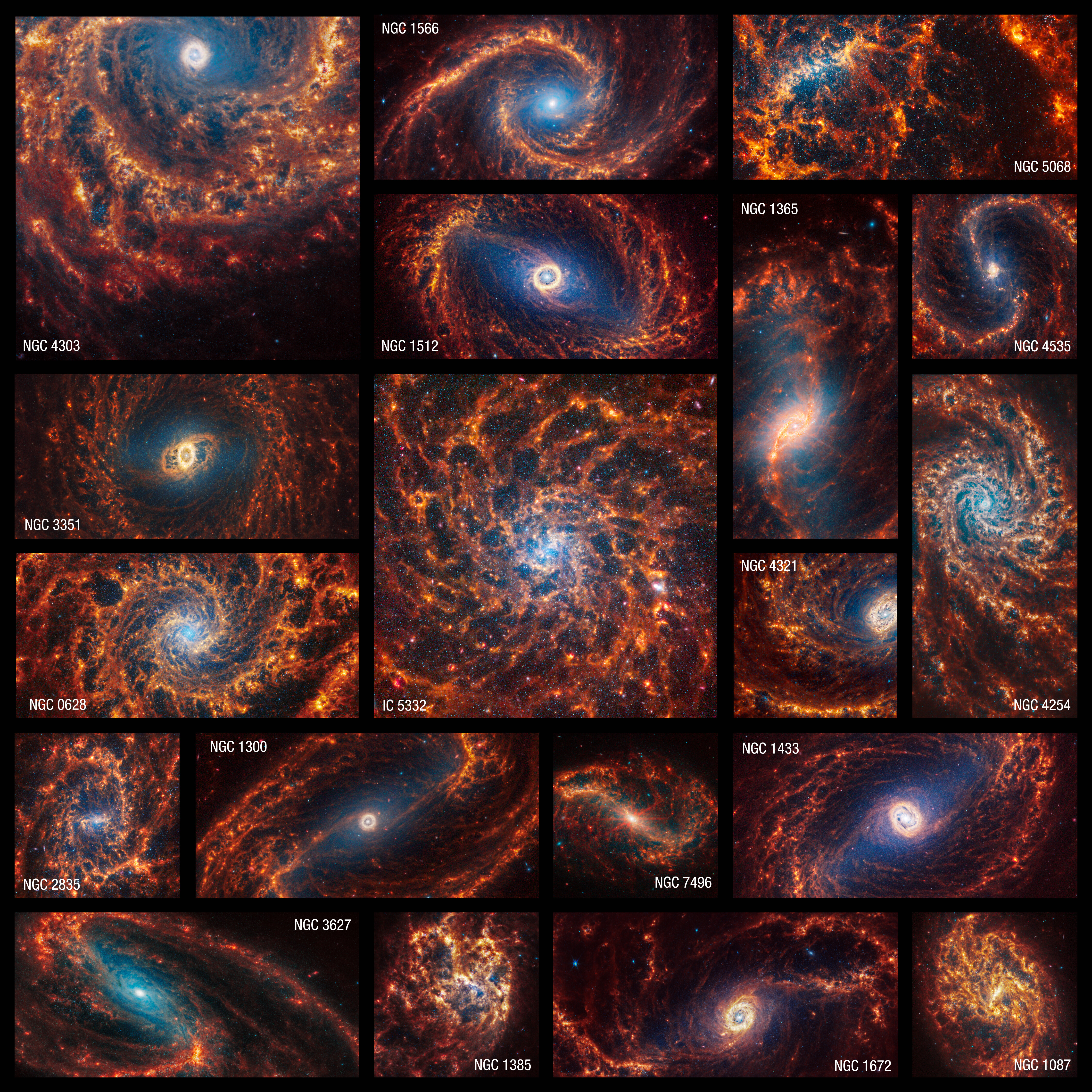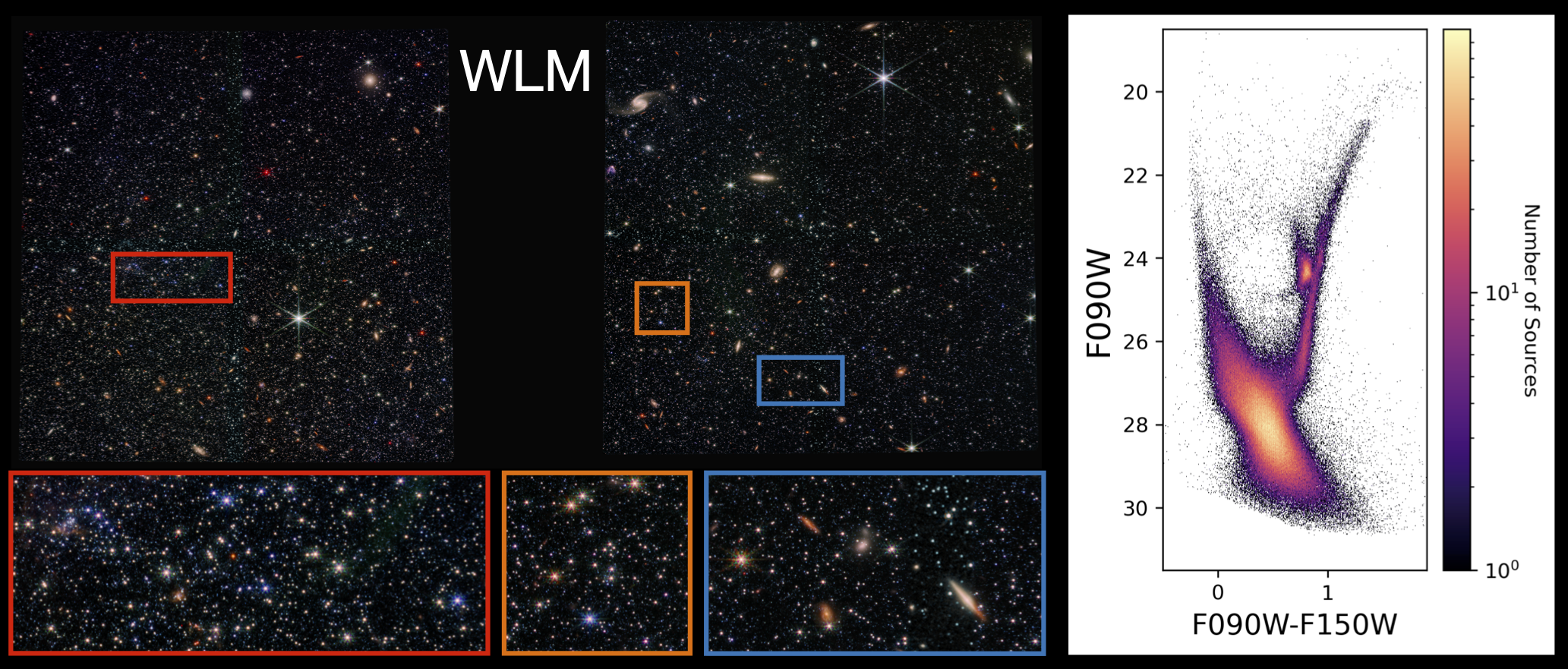STScI Newsletter
2024 / Volume / Issue
About this Article
MAST Staff - 2024 Feb 27New HLSPs
- The PHANGS program has released JWST processed imaging of 19 galaxies in 8 bands from 2-21 microns, and catalogs of HST UV-optical photometry of ~100,000 star clusters and associations across 38 galaxies. The JWST and HST products complement existing PHANGS Atacama Large Millimeter/submillimeter Array (ALMA) CO(2-1) mapping and Very Large Telescope/Multi Unit Spectroscopic Explorer (VLT/MUSE) optical spectroscopy. PHANGS uses these data to study the star formation cycle and various phases of the interstellar medium. View the PHANGS-JWST page.
- JWSTSTARS: JWST sees stars galore! New data and software from the Resolved Stellar Population Early Release Science team showcase how JWST can resolve individual stars in nearby galaxies and star clusters. JWST observations of resolved stars make a lot of science possible, such as glimpses into how stars form, measuring galaxy growth over cosmic time, and measuring the expansion rate of the universe. View the JWSTSTARS page.
Updated HLSPs
- GSFC-ELEANOR-LITE has added light curves from sector 10. This adds 9,717,705 light curves to the collection. There are now a total of 49 million light curves in this collection. View the GSFC-ELEANOR-LITE page.
- TICA provides quick-look, calibrated TESS full-frame images. View the TICA page. The latest orbits that have been added are:
- Sector 74, Orbit 2B
- Sector 75, Orbit 1A
- Sector 75, Orbit 1B
- Sector 75, Orbit 2A
- QLP "quick-look" calibrated light curves TESS light curves are now available for sectors 69 and 70. Together, they add 853,912 light curves to this collection. View the QLP page.

